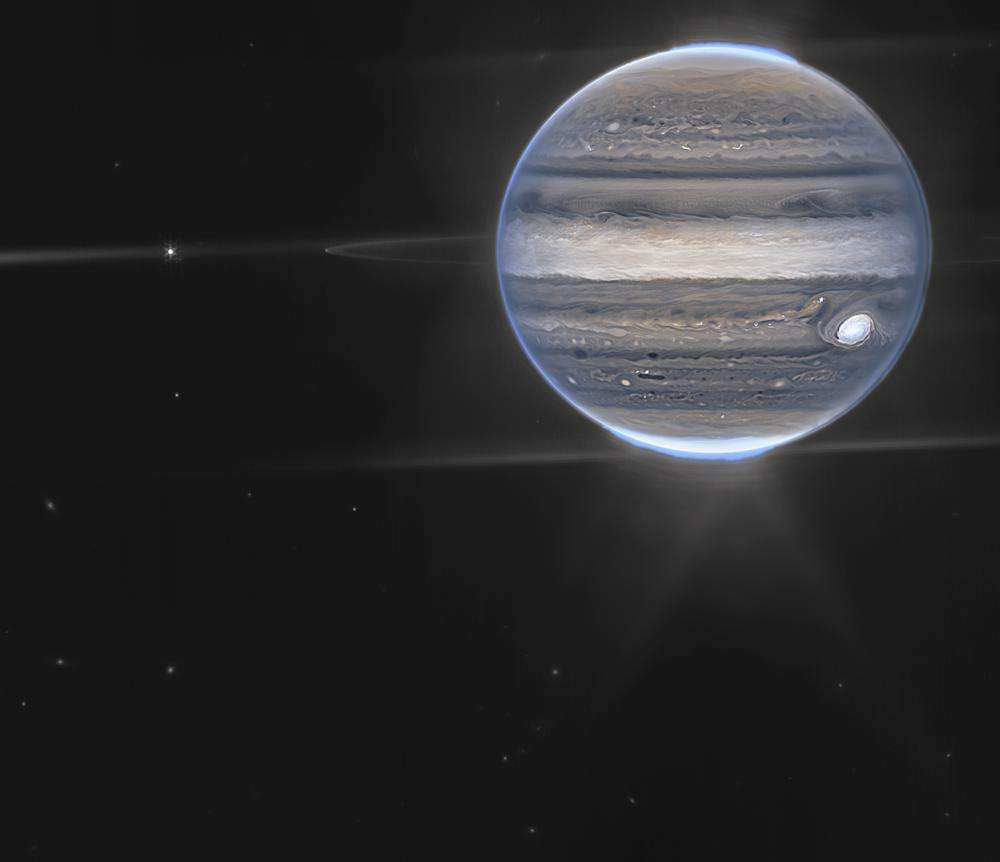The world’s newest and largest space telescope, the James Webb, is showing Jupiter like never before, auroras and all.
Scientists released the images Monday of the largest planet in the solar system.
The telescope took the photos in July, capturing unprecedented views of Jupiter’s northern and southern lights and swirling polar haze.
Jupiter’s Great Red Spot, a storm big enough to engulf the Earth, stands out brilliantly alongside countless smaller storms.
A wide-field image is particularly dramatic, showing the faint rings around the planet as well as two small moons against a bright background of galaxies.
“We have never seen Jupiter like this. It’s all pretty incredible,” said astronomer Imke de Pater of the University of California, Berkeley, who helped lead the observations. “We really didn’t expect it to be that good, to be honest,” he added.
The infrared images were artificially colored blue, white, green, yellow and orange, according to the French-American research team, to highlight features.
Scientists hope to witness the dawn of the universe with James Webb and look back to when the first stars and galaxies formed 13.7 billion years ago.
Associated Press/OnCuba.

















